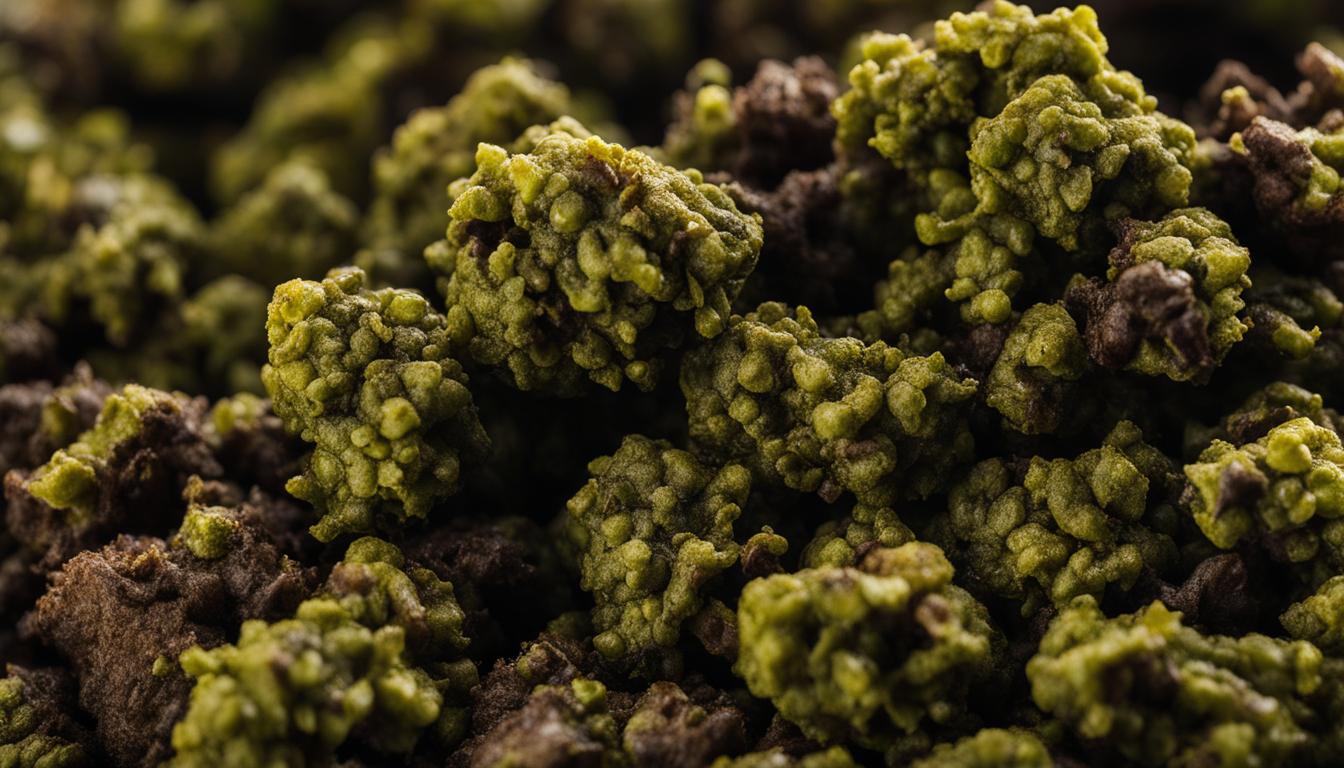Understanding Amyloidosis in Cats
Amyloidosis is a complex disease that can affect cats, particularly those who are 7 years old or older. It is characterized by the accumulation of misfolded, complex proteins called amyloids in various organs of the body. These amyloids are unable to be absorbed by the body, leading to the formation of abnormal protein structures. While amyloidosis can be a serious condition, the prognosis varies depending on the extent of organ involvement and the specific form of amyloidosis.
Overview of Amyloidosis
Amyloidosis is a disease caused by the deposition of amyloid proteins in different tissues and organs. These amyloid proteins are formed when normal proteins undergo misfolding and aggregate together instead of being properly broken down by the body. The accumulation of amyloids can disrupt the normal structure and function of organs, leading to organ damage and dysfunction.
In cats, one form of amyloidosis called senile systemic amyloidosis is often observed in older cats. This form of amyloidosis is characterized by small deposits of amyloid that generally have minimal impact on a cat’s health. It is typically discovered incidentally during necropsies performed on cats who have passed away due to other causes (PetMD).
Forms of Amyloidosis in Cats
Amyloidosis in cats can manifest in several forms, including:
- Systemic Amyloidosis: This form affects multiple organs in the body, such as the kidneys, liver, and heart. It can become fatal if extensive amyloid deposits occur in critical organs.
- Familial/Hereditary Amyloidosis: Some cases of amyloidosis are hereditary and can be traced back to an abnormal gene mutation. Breeds such as Siamese and Abyssinian cats have a higher reported incidence of developing this condition (Wagwalking). To learn more about hereditary amyloidosis in cats, visit our article on hereditary amyloidosis in cats.
It’s important to note that while amyloidosis can be a serious condition, it is considered relatively rare in cats (Wagwalking).
Understanding the different forms of amyloidosis in cats helps veterinarians and cat owners recognize the potential risks and develop appropriate treatment and management plans. In the following sections, we will explore the symptoms, diagnostic challenges, risk factors, and organ-specific effects of amyloidosis in cats.
Symptoms and Diagnosis
When it comes to diagnosing and identifying the symptoms of amyloidosis in cats, there are a few key factors to consider. Understanding the signs of amyloidosis and the challenges associated with its diagnosis is crucial for early detection and effective management.
Signs of Amyloidosis
The signs of amyloidosis in cats can vary depending on the affected organ system, but kidney involvement is the most common manifestation. Some common symptoms that may indicate the presence of amyloidosis include:
- Loss of appetite
- Lethargy
- Increased drinking and urinating
- Weight loss
- Vomiting
- Diarrhea
- Fluid buildup in various areas of the body
It’s important to note that these symptoms can also be indicative of other feline diseases. Therefore, diagnosing amyloidosis solely based on clinical signs can be challenging. Many cats are already displaying clinical signs by the time they are admitted to the veterinary clinic, and the diagnosis of amyloidosis is often made post-mortem. For more information on the symptoms of amyloidosis in cats, refer to our article on amyloidosis in cats symptoms.
Diagnostic Challenges
Amyloidosis in cats is difficult to differentiate from other feline diseases, as organ failure, infection, and disease of the kidneys, liver, spleen, and related organs can mimic the clinical signs associated with amyloidosis. This makes the diagnosis of amyloidosis a complex process.
Veterinarians may suspect amyloidosis if a cat has a chronic infection or inflammation and subsequently develops kidney or liver failure. However, a definitive diagnosis usually requires a biopsy of the affected organ and identification of amyloid deposits. Unfortunately, this can be challenging due to the wide distribution and hidden onset of amyloidosis.
Post-mortem examination is often necessary for an accurate diagnosis. However, advancements in diagnostic techniques and increased awareness of amyloidosis have led to improvements in early detection. Veterinarians may use various imaging tests, blood work, and biopsies to aid in the diagnosis of amyloidosis in cats. For more information on the diagnostic process, please refer to our article on diagnosing amyloidosis in cats.
As research continues to evolve, efforts are being made to improve the diagnosis of amyloidosis in cats. Genetic testing is another area of focus, particularly for hereditary forms of amyloidosis. Early identification and intervention remain crucial for managing the condition effectively. To learn more about the genetic implications of amyloidosis in cats, refer to our article on hereditary amyloidosis in cats.
Understanding the signs and challenges associated with diagnosing amyloidosis in cats is essential for timely intervention and improved outcomes. If you suspect that your cat may be experiencing symptoms related to amyloidosis, it’s important to consult with a veterinarian for a comprehensive evaluation and appropriate diagnostic testing.
Risk Factors and Predisposed Breeds
When it comes to amyloidosis in cats, certain risk factors and breed predispositions can play a role in the development of this condition. Understanding these factors is crucial in identifying potential cases and providing appropriate care for affected cats.
Age and Onset
Amyloidosis can occur at any age in cats, but it is more commonly seen in older felines. Most cats diagnosed with amyloidosis are older than 7 years of age. However, it’s important to note that in genetically linked amyloidosis in breeds such as Abyssinian and Siamese cats, the average age of onset is much younger, typically less than 5 years of age and sometimes as early as 1 year old. Keep in mind that the progression of the disease can vary, with some cats experiencing a rapid decline while others may show a slower progression over several years.
Breed Susceptibility
Certain cat breeds are more susceptible to developing amyloidosis. Breeds such as Abyssinians and Siamese cats have been found to have a genetic predisposition to the disease (PetMD). It is recommended that affected cats of these breeds be removed from breeding programs to prevent the transmission of the condition to future generations.
It’s important to note that while certain breeds may have a higher risk, amyloidosis can affect cats of any breed or mixed breed. Therefore, it’s crucial to be aware of the symptoms and seek proper diagnosis if you suspect your cat may be affected, regardless of their breed.
By understanding the risk factors and breed predispositions associated with amyloidosis in cats, veterinarians and cat owners can be more vigilant in monitoring and identifying potential cases. Early detection and intervention can play a crucial role in managing the condition and improving the prognosis for affected cats.
Organ-Specific Effects
Amyloidosis, a systemic disorder characterized by the abnormal accumulation of amyloid protein, can have organ-specific effects in cats. This section will explore the impact of amyloidosis on the liver, kidneys, and heart.
Liver Involvement
In cats with liver amyloidosis, the liver is primarily affected by the deposition of amyloid protein. Common symptoms of liver involvement include yellowing of the skin and eyes (jaundice) and internal bleeding, which may manifest as a distended abdomen, pale gums, rapid breathing, or collapse.
Certain cat breeds are more predisposed to liver amyloidosis, such as Oriental Shorthairs, Abyssinians, and Siamese cats (PetMD). A proper diagnosis of liver amyloidosis is crucial for determining the appropriate treatment and management plan. For more information on the symptoms and diagnosis of amyloidosis, refer to our article on amyloidosis in cats symptoms.
Kidney Complications
While kidney amyloidosis is relatively uncommon in cats, certain breeds, particularly Abyssinians, can be genetically predisposed to this form of amyloidosis. In kidney amyloidosis, amyloid protein is deposited in the kidneys, leading to a buildup of protein and eventual kidney failure.
The most common form of amyloid protein associated with kidney amyloidosis in cats is AA amyloid. While the exact cause of AA amyloid deposition in the kidneys is not fully understood, genetic factors and other underlying conditions can contribute to its development. For more information on the causes and risk factors of amyloidosis, refer to our article on feline amyloidosis causes.
Heart Afflictions
Amyloidosis can also affect the heart in cats. The deposition of amyloid protein in cardiac tissues can lead to abnormalities in heart function and structure. Cats with cardiac amyloidosis may experience symptoms such as heart murmurs, arrhythmias, shortness of breath, and exercise intolerance.
The specific type of amyloid protein involved in heart amyloidosis can vary. AL amyloid, which is commonly associated with certain types of cancer, including plasma cell tumors or myelomas, has a propensity for depositing in nerve tissue and joints (Merck Veterinary Manual). Proper diagnosis and management of heart amyloidosis are crucial for optimizing the cat’s quality of life.
Understanding the organ-specific effects of amyloidosis in cats is essential for timely diagnosis and appropriate treatment. While amyloidosis in cats currently lacks definitive treatment options, controlling inflammation and managing the symptoms can help improve the cat’s overall well-being. For more information on the treatment and management of amyloidosis, refer to our article on amyloidosis in cats treatment.
Treatment and Management
When it comes to amyloidosis in cats, unfortunately, there are currently no specific treatments available to prevent the development of the condition or promote the reabsorption of the protein deposits in affected cats. Efforts instead focus on controlling long-term inflammation to minimize the production of more amyloid. It’s important to note that amyloidosis in cats is a challenging condition to manage due to its wide distribution and hidden onset, making early detection and intervention difficult (Merck Veterinary Manual).
Lack of Treatment Options
Currently, there is no known treatment or medication that allows the feline body to absorb or break down the complex, mutated amyloid proteins, preventing the buildup of amyloid deposits in the organs. This lack of treatment options poses a challenge in managing amyloidosis in cats. As a result, the focus shifts toward monitoring and managing the symptoms and complications associated with the disease.
Controlling Inflammation
Controlling inflammation is a key aspect of managing amyloidosis in cats. By minimizing long-term inflammation, the production of more amyloid can be reduced. This involves working closely with a veterinarian to develop a comprehensive treatment plan that may include medications to manage inflammation and supportive care to alleviate symptoms.
It’s important to remember that early diagnosis and intervention are crucial in managing amyloidosis in cats. Regular check-ups and monitoring of organ function can help detect any changes early on, allowing for appropriate management strategies to be implemented.
While there is no true prevention method for amyloidosis, maintaining overall good health in cats can potentially reduce the risk of developing this fatal disease (Wagwalking). Providing a balanced diet, regular exercise, and a stress-free environment can contribute to a cat’s overall well-being and potentially minimize the chances of developing amyloidosis.
As research continues to advance, there is hope for future breakthroughs in the treatment and management of amyloidosis in cats. Until then, the focus remains on controlling inflammation and providing supportive care to improve the quality of life for affected cats. If you suspect your cat may be at risk or showing symptoms of amyloidosis, it’s important to consult with a veterinarian for proper diagnosis and guidance.
Genetic Implications
When it comes to understanding amyloidosis in cats, genetic factors play a significant role. Let’s explore the hereditary factors and genetic testing efforts associated with this condition.
Hereditary Factors
Amyloidosis in cats can be influenced by hereditary factors. Certain breeds, such as Abyssinian, Siamese, and Devon Rex, have a higher susceptibility to developing amyloidosis. The presence of abnormal gene mutations in these breeds contributes to the development of this condition.
It is important to note that hereditary amyloidosis occurs within certain bloodlines of these breeds. If a feline family member has been diagnosed with amyloidosis, it is highly recommended to remove affected cats from breeding programs to prevent the spread of the condition.
Genetic Testing Efforts
Genetic laboratories are actively working to develop genetic testing for breeds prone to amyloidosis, such as Siamese and Abyssinian cats. However, at present, a genetic test for identification is not available. It is crucial for breeders and cat owners to be vigilant and proactive in monitoring the health of their cats, especially those with a higher risk of developing amyloidosis.
While genetic testing is not currently available, being aware of the breed’s predisposition to amyloidosis can help guide responsible breeding practices and aid in early detection and intervention.
Understanding the hereditary nature of amyloidosis in cats can assist breeders, veterinarians, and cat owners in making informed decisions to mitigate the risk of this potentially fatal condition. By working towards establishing reliable genetic testing, it is possible to reduce the prevalence of amyloidosis in susceptible breeds and ensure the well-being of future feline generations.
For more information on the symptoms, causes, and diagnosis of amyloidosis in cats, refer to our articles on amyloidosis in cats symptoms and feline amyloidosis causes.








